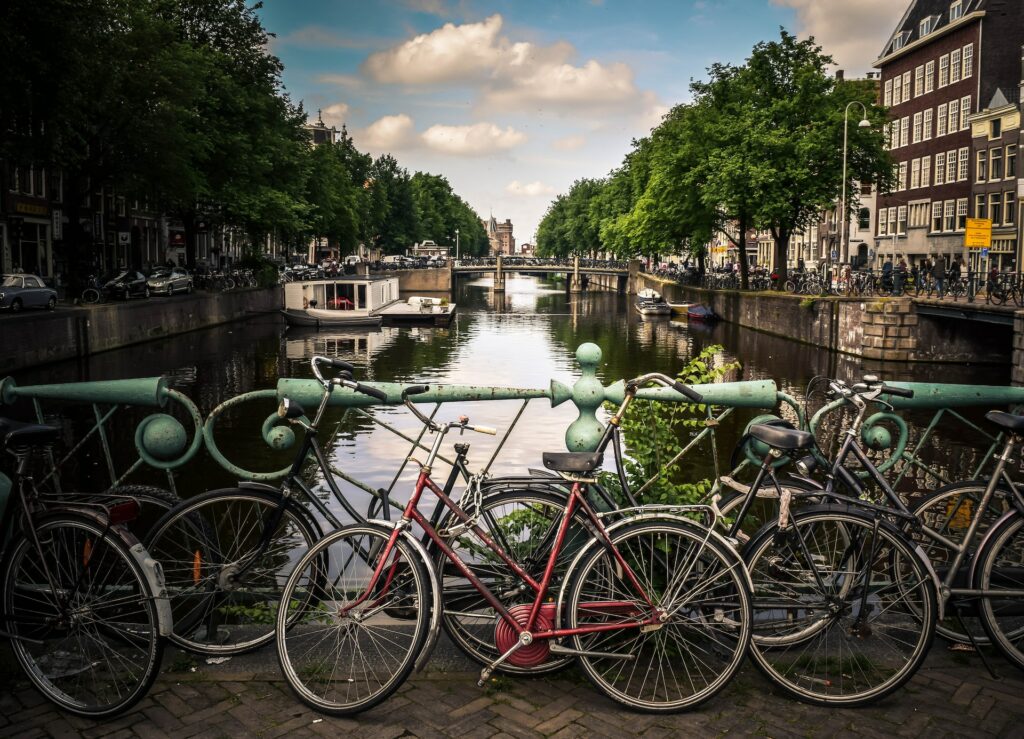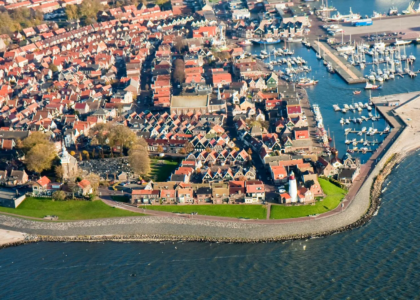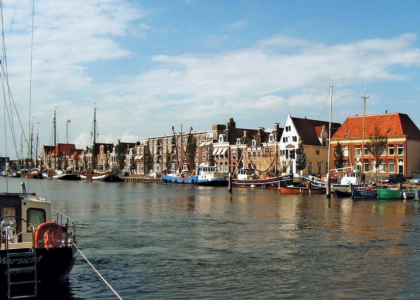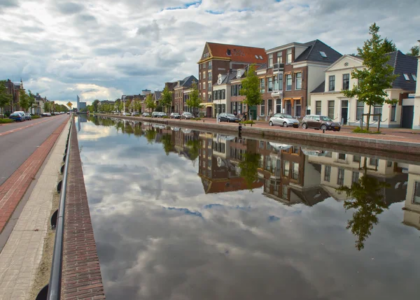Welcome to our comprehensive guide on the safety of visiting Amsterdam in 2023. As you plan your trip to the vibrant capital of the Netherlands, it’s natural to have concerns about safety.
In this article, we’ll explore the various safety measures and infrastructure in Amsterdam (Dam), giving you valuable insights to make an informed decision about your visit. Discover why the city is considered a safe destination and how you can ensure your well-being during your time in the city.
Is Amsterdam Safe to Visit in 2023?
Amsterdam, the bustling capital of the Netherlands, is renowned for its picturesque canals, rich history, and liberal culture. However, like any other popular tourist destination, safety is a concern for travelers.
Let’s consider the key aspects of safety in Dam to help you make an informed decision about visiting this charming city.

Safety Measures and Infrastructure
Safety is taken seriously in Amsterdam, and various measures and infrastructure are in place to ensure the well-being of residents and visitors. Here are some key safety measures and city infrastructure:
- Robust transportation system: Amsterdam has a well-developed public transportation system, including trams, buses, and trains. These modes of transportation are not only efficient but also well-maintained and regularly monitored for safety. The transportation network covers the entire city, allowing people to navigate easily and explore Dam safely;
- Street lighting: The streets of the city are well-lit, providing visibility and enhancing overall city safety. Well-illuminated streets contribute to a sense of security, especially during evenings and nights when visibility is crucial for pedestrians and cyclists;
- Cycling infrastructure: The city is famous for its cycling culture, and the city has invested in developing cycling infrastructure to ensure safe and efficient bike travel. Dedicated bike lanes separate cyclists from vehicular traffic, ensuring the safety of cyclists. Additionally, bike racks and designated parking areas are available throughout the city, promoting secure bike storage;
- Pedestrian-friendly pathways: Amsterdam prioritizes pedestrian safety by creating pedestrian-friendly pathways. The city features wide sidewalks and pedestrian crossings, ensuring the safety and convenience of pedestrians in busy areas. Furthermore, traffic lights and pedestrian priority zones enhance pedestrian safety;
- Surveillance cameras: Dam has an extensive network of surveillance cameras throughout the city. These cameras help deter crime and provide an additional level of safety by assisting law enforcement in monitoring public spaces and identifying potential threats;
- Police presence: Amsterdam boasts a noticeable police presence, particularly in popular tourist areas and busy city centers. Police presence creates a sense of security and serves as a deterrent to potential wrongdoers. In case of emergencies or safety concerns, tourists and residents can seek assistance from the police;
- Fire safety: Effective fire safety measures are in place in the city, including a well-equipped fire service and regular inspections of buildings and public spaces to ensure compliance with fire safety regulations. Fire alarms, extinguishers, and emergency exit signs are typically present in buildings, further enhancing safety levels.
It is important to note that while all these measures and infrastructure contribute to the overall safety of Dam, individuals should still exercise personal responsibility and take necessary precautions to ensure their own well-being.
Being aware of one’s surroundings, avoiding risky behavior, and following local laws and instructions are key to a safe stay in any city, including Amsterdam.
Crime Rates
When considering the safety of any city, it’s essential to analyze the crime rates. While Dam is generally considered a secure destination, it is not completely free of crime. Here’s an overview of the crime rates in Amsterdam:
- Pickpocketing: One of the most common crimes in Amsterdam is pickpocketing, especially in crowded tourist areas. Pickpockets often target unsuspecting tourists in crowded places such as trams, markets, and popular attractions. It is advisable to keep a close eye on personal belongings, secure wallets, phones, and valuables in a safe place, and avoid displaying expensive items openly;
- Bicycle theft: As cycling is a popular mode of transportation in Amsterdam, bicycle theft is also prevalent. It is crucial to securely lock bicycles, even when leaving them unattended for a short time. Using a sturdy lock and parking the bicycle in designated areas can significantly reduce the risk of theft;
- Drug-related crimes: Dam’s reputation for its liberal drug policy and coffee shops may create associations with drug-related crimes. However, drug-related crimes mainly occur within the realm of illegal drug trade, rather than targeting tourists or visitors. It is important to exercise common sense, avoid engaging in illegal activities, and follow the laws and regulations;
- Scams and street vendors: Some tourists may encounter scams or deceitful practices, especially in busy tourist areas. Street vendors selling counterfeit products or individuals offering overpriced services are common occurrences. By being cautious, avoiding suspicious deals, and conducting legitimate transactions only through reliable sources, one can avoid falling victim to scams.
It is important to note that compared to other major European cities, the crime rate in the city is relatively low. However, it is crucial to remain vigilant and take necessary precautions to ensure personal safety and protect belongings.
To stay safe in Amsterdam:
- Secure your belongings: Keep your personal belongings close to you, preferably in zippered bags or pockets. Use anti-theft devices for bags and avoid carrying large sums of cash or valuable items unless necessary;
- Be vigilant in crowded places: Pay attention to your surroundings, especially in crowded areas where pickpockets may operate. Avoid distractions and consistently keep an eye on your belongings;
- Use reliable transportation services: When getting around the city, use reputable taxi services or public transportation. Avoid unlicensed taxis or rides with strangers;
- Exercise caution in the Red Light District: While the Red Light District is a popular tourist attraction, it is recommended to exercise caution and respect boundaries, and the privacy of workers. Avoid confrontation and refrain from taking photos without explicit permission;
- Follow local laws and regulations: Familiarize yourself with local laws and abide by them. Be mindful of drug-related laws, as certain substances may be allowed while others are strictly prohibited.
It is important to remember that while Amsterdam has its share of crime, it is generally a safe city. By practicing simple precautions, staying informed, and being attentive to your surroundings, you can enjoy your time in the city with peace of mind.
Transportation Safety
Transportation safety is an important aspect to consider when evaluating overall city safety. In Amsterdam, the city’s transportation system is generally regarded as safe and efficient. Here are some key points regarding transportation safety in Dam:
- Public transportation: Amsterdam has a well-developed and reliable public transportation system, including trams, buses, and trains. These modes of transportation are regularly serviced and monitored for safety. Trams and buses are known for their punctuality, while trains provide efficient connections to various parts of the country;
- Cyclist safety: The city is renowned for its cycling culture, and bicycles are a popular mode of transportation for both residents and visitors. The city has dedicated bike lanes separated from automobile traffic, ensuring the safety of cyclists. However, to ensure safe and peaceful cycling, it is important to familiarize yourself with local rules and cycling etiquette. Always wear a helmet and use lights when cycling during dark hours;
- Pedestrian safety: Amsterdam is designed to be pedestrian-friendly, with wide sidewalks and well-marked pedestrian crossings. Some areas also have pedestrian priority zones, ensuring their safety. However, caution should be exercised when crossing streets and following traffic signals;
- Train safety: Trains in the city are considered safe and reliable. Platforms and stations are well-serviced and monitored, often with the presence of security personnel. It is recommended to keep an eye on personal belongings, especially in crowded compartments or during rush hours;
- Water transportation: Amsterdam’s canals are an iconic part of the city, and water transportation is available in the form of boats and ferries. While these modes of transportation are generally safe, it is important to adhere to safety guidelines provided by operators and be mindful of potential hazards on the water;
- Taxi safety: Taxis in Dam are generally safe and regulated. It is advisable to use licensed taxis or ride-hailing services such as Uber, as they provide greater safety and accountability. Avoid unlicensed or unmarked vehicles and always agree on the fare before the ride begins;
- Road safety: If you choose to drive in Amsterdam, it is crucial to familiarize yourself with local traffic rules and regulations. Be attentive to cyclists and pedestrians, as they may have priority in certain areas. Parking rules are strictly enforced, so it is important to adhere to them to avoid fines or towing.
While Amsterdam’s transportation system is considered safe, it is always recommended to remain vigilant and take necessary precautions. Be aware of your surroundings, secure your belongings, and follow the instructions of transportation personnel. It is also advisable to have a map or navigation app handy to easily navigate the city and safely reach your destination.
Is it safe to walk through Amsterdam at night?
Nighttime walks in Amsterdam are generally safe, but it’s important to exercise caution and remain vigilant of your surroundings. Here are some key points to consider regarding safety during nighttime walks in Dam:
- Well-lit streets: Amsterdam is known for its well-lit streets, which contribute to a sense of safety during evening and nighttime hours. The city makes efforts to maintain proper lighting to ensure visibility for pedestrians;
- Popular areas: In major tourist areas of Amsterdam, such as the city center, Dam Square, and the Red Light District, there is usually a vibrant atmosphere even at night. These areas are generally safe due to the presence of other pedestrians, tourists, and sometimes enhanced police patrols;
- Crowded places: It is recommended to stick to densely populated and bustling areas during nighttime walks. Crowded places provide a higher level of safety as there are more people around, reducing the likelihood of encountering potential risks;
- Use designated pedestrian pathways: Amsterdam has well-marked sidewalks and pedestrian paths. It is important to use these designated pedestrian pathways and avoid walking on roads or bicycle lanes, which can pose potential hazards;
- Trust your instincts: Trusting your instincts is crucial. If you feel uncomfortable or sense potential danger in a particular area, it’s best to avoid it, find an alternative route, or seek assistance from a reliable source, such as a police officer or nearby establishment;
- Safety in numbers: Group walks, especially during dark hours, provide an additional level of safety. Traveling in the company of others helps deter potential criminals and offers support in case of emergencies;
- Late-night public transportation: If you plan to cover longer distances or feel more secure using public transportation during nighttime, Amsterdam offers night buses and trams that operate until late hours. These options can be a convenient and safe way to reach your destination.
Ultimately, rely on your judgment and adapt to specific situations. If you feel uncomfortable walking alone at night, consider alternative means of transportation such as taxis or ridesharing services. By exercising caution and attentiveness, you can ensure a safe and enjoyable nighttime stroll in Amsterdam.
Conclusions
While no city can be completely free of crime, Amsterdam is generally considered a safe destination for travelers. The city maintains safety measures, has lower crime rates compared to other European capitals, and its efficient infrastructure contributes to a secure environment.
By practicing simple precautions, being mindful of your surroundings, and adhering to safety guidelines, tourists can enjoy all that Amsterdam has to offer without compromising their well-being. So pack your bags, immerse yourself in the city’s rich culture, and confidently embrace the charm of Amsterdam!















